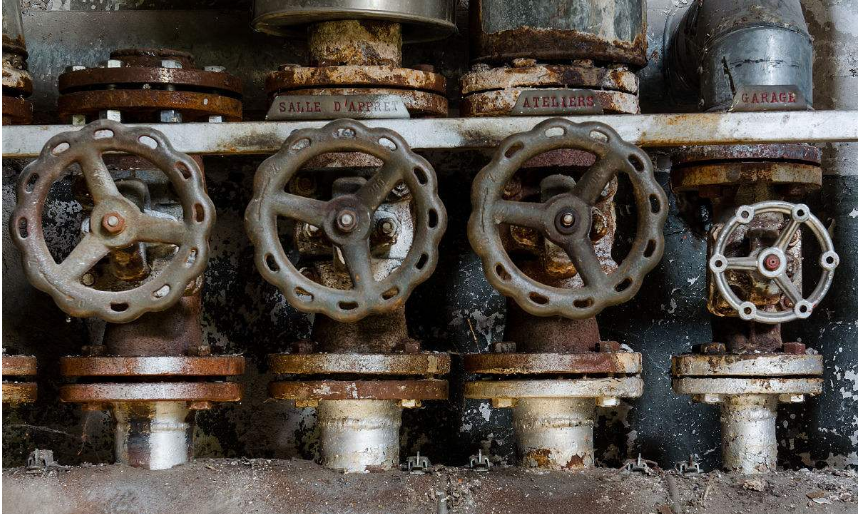I. Reasons for Rust of Stainless Steel Valves
To test whether stainless steel valves will rust, we can put the same valves in different environments to verify and compare. Generally speaking, if stainless steel valves are placed in relatively dry environments, after long time, the valves are not only as good as new, but also not rusty. But if the valves are placed in seawater containing a lot of salt, they will rust in a few days. Therefore, the corrosion resistance and stainless of stainless steel valves also need to be limited by the use environment. In addition, from the characteristics of stainless steel valve itself, it is stainless because there is a layer of chromium-rich oxide film on its surface to prevent particles such as oxygen atoms from invading and damaging objects, which makes it stainless. But when the film is destroyed by environmental factors, as oxygen atoms enter and iron ions free, stainless steel valve will produce rust.
The destruction of stainless steel valve surface film causes many reasons for rust. Some of them are electrochemical reactions with other metal elements or particles. At the same time, with the help of moist air as a medium, a micro battery cycle is formed, which makes stainless steel surface rusty. It can also be exposed to corrosive liquids such as strong acid and strong alkali, and so on. In order to prevent stainless steel valve from rusting, we should also pay attention to the cleaning of objects in daily use and keep the surface of the valve clean.
Many of the reasons for your stainless steel rusting double as ways you can prevent your appliance from rusting. While stainless steel refrigerators, ovens, sinks and other appliances are specifically made for being in the kitchen around water, they still require care. There are three main causes for rust on stainless steel:
- Improper cleaning: When dirt isn’t removed properly or soap dries on the surface, it allows iron to react to the oxygen in the air.
- Scrubbing the surface with steel, wool or wire brushes: Not only are these tools much to harsh for stainless steel, but the particles can become embedded onto the surface and cause rust.
- Cleaning chemicals: Below you’ll see a list of chemicals you shouldn’t use on your stainless surface. Be cautious of cleaning other surfaces with these chemicals near your stainless steel appliances. For example, if you clean your floors with a product containing alcohol, the bottom of your refrigerator may suffer.

2. How to Prevent Stainless Steel From Rusting?
- Protective Coatings
Steel corrodes through what is called “uniform attack corrosion.” This means corrosion occurs uniformly over the entire surface of the metal that is exposed. Equipping steel with a protective coating is one of the most effective ways to prevent uniform corrosion from occurring. The coating acts as a barrier between the steel and corroding agents such as rain, humidity, and salt. Preventative coatings, most of which are easy to apply, come in various forms and can be oil or water based. - Metal Paint
Painting over a metal surface is one of the easiest and most affordable ways to prevent corrosion. A layer of metal paint can serve as a protective barrier against moisture and other corroding agents. However, since paint itself is susceptible to chipping and deterioration, it is important to re-apply it whenever wear occurs. - Steel Lubricant
Paint does not work as well on steel parts that move, such as hinges, joints, and bearings. Typically, painting over moving parts will cause them to stick and the paint will crack when the part is forced. This is where a water-based lubricant can come in handy. Along with allowing easy movement, a lubricant will also repel moisture that can cause corrosion. - Galvanized Metal
Galvanization is the process of applying a thin layer of zinc to protect steel from corrosion. Because zinc is more chemically active than steel, it oxidizes when exposed to air allowing it to serve as a protective coating. The process of galvanization requires industrial chemicals and extremely hot temperatures. Therefore, only trained professionals should perform galvanization!
3. How Do I Remove Rust from My Stainless Steel Appliance?
If you’ve found yourself in the position where your appliance has already rusted, you’re not out of luck quite yet. As long as you deal with it accordingly, you should be able to get it back to its original condition. Make a paste made with water and baking soda. Then, use a clean cloth or soft bristle brush to wipe the appliance, wiping in the same direction as the grain. Rinse with clean water, so the baking soda doesn’t dry onto the surface. Lastly, apply some stainless steel cleaner and wipe gently.
Related Tags :
Ten articles before and after
Taboos and Measures of Drainage Valve Pipeline Construction
Emerson (NYSE: EMR) announced it has acquired Advanced Engineering Valves (A.E. Valves)
Performance comparison of zirconia and alumina ceramics
Thermal insulation valves: ball valves feature, principal, installation,advantageous
Several Reasons and Preventive Measures for Flame and Explosion of Oxygen Valve, Pipeline Valve
Mol, Thyssenkrup to establish polyol site in Hungary
Environmental cupola is still energetic: STATE OF THE U.S. CUPOLA INDUSTRY
Valve weld Skill improved: fish scale weld,TIG( Tungsten invert gas welding)
Technical Requirements for Boiler Forging Valves-Raw Material












